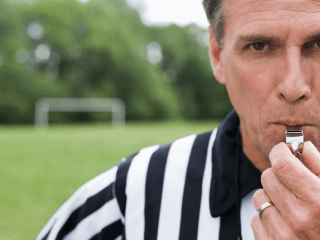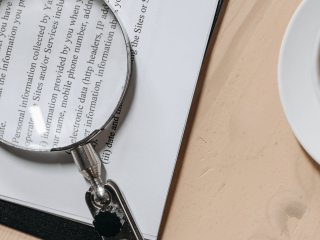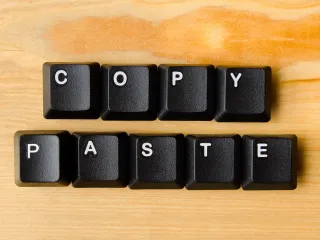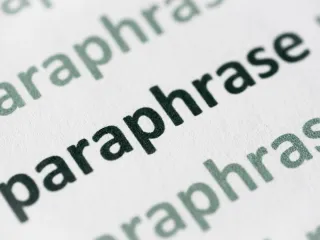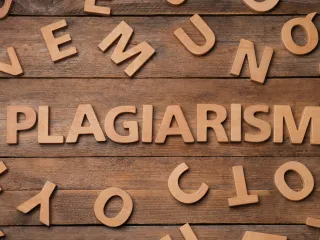Do Not Plagiarize – How to Avoid Plagiarism
You know how our teachers are always telling us not to plagiarize? That it’s critical we do our own work instead? That plagiarism is different than cheating, and often unintentional, but will be treated exactly the same way by authorities?
Well, that’s all true. Academic integrity demands that you don’t plagiarize in your academic writing, but that’s sometimes easier said than done. Creating your own original work is demanding, citation requirements are persnickety, and it can happen to the best of us. To the worst of us, it doesn’t “happen” so much as it’s a choice, but let’s assume the whole best-of-us thing.
In addition to negative consequences for your own work and academic career, it damages the person whose work you are stealing. It makes it look like theirs isn’t original, or worse, that perhaps they are the one who didn’t try to not plagiarize. That’s not fair.
Unfortunately, plagiarism incidents are rampant in student work and the professional world. Some studies have found that huge percentages of students sometimes or seldom plagiarize (as much as 70 percent). Similarly, text analyses of papers published in journals show that a full 18 percent of articles at the professional level have instances of plagiarism. Clearly, this indicates a widespread problem. Most likely, many of these people don’t understand the rules regarding how to not plagiarize facts, as well as why you should not plagiarize.
That’s what we aim to fix in this article. Read on to learn how not to plagiarize.
What Is Plagiarism?
Plagiarism is the act of taking someone else’s work and using it as your own. Often, that means using another author’s words without attribution or proper citation. That can mean referencing word for word their ideas from a research paper or journal articles. It can also mean that you don’t use their exact words, but that you don’t acknowledge the original source either.
The root of plagiarism is that you are foregoing the hard work of coming up with your own idea or writing, and instead inserting that of someone else. This can take many forms.
Direct Plagiarism
This is the “not so secret form of cheating,” in which you knowingly take the work of another individual and try to pass it off as your own.
Self-Plagiarism
Self-plagiarism is when you use your own work over again in a new essay or piece of work. This is a problem both in school and in college, because it means you’re not obeying the spirit of the assignment. You are instead refurbishing old ideas, either blowing off schoolwork, or at a professional level, creating unoriginal pieces that you or your company is being paid for.
Source-Based Plagiarism
This is a type of plagiarism in which you do not cite the source correctly. The end result is that readers cannot find where you found the words or idea, so the original creator doesn’t get credit. This happens for many reasons, including accident, fudging a reference list, or simply being too lazy to find the real source.
Accidental Plagiarism
The only type of “innocent” plagiarism, accidental plagiarism happens when you truly mess up. You might forget to quote a source or reference it incorrectly, with the same results as above. Unfortunately, the consequences of accidental plagiarism are the same as any other type, so you need to learn the rules on how to avoid plagiarism entirely (discussed below).
Patchwork Plagiarism
Short on time, but want to make sure you’re not nailed for plagiarism? Patchwork plagiarism occurs when you rearrange ideas from one or many authors so that it looks like a new piece of work. Spoiler alert: it isn’t.
Consequences of Plagiarism
The consequences of plagiarism can be severe. Any time you steal intellectual property – which is what plagiarism is – or fail to give proper attribution, you are breaking academic rules and potentially the law. Students can get expelled and workers can be fired. Fines and jail time can accrue. Even high-octane professionals have been burned for this before.
Jonah Lehrer
A true shining star, Jonah Lehrer was publishing books and writing for The New Yorker before most of us had figured out what job or industry we’d want to have in the future. When it was discovered that he fabricated Bob Dylan quotes for his latest book, though, his entire career fell apart.
Joe Biden and Melania Trump
Plagiarism happens on both sides of the aisle, apparently. Both Joe Biden and Melania Trump have been caught using excerpts of other people’s speeches without proper attribution.
George Harrison
Even the Beatles aren’t immune. George Harrison earned himself a fine of more than half a million dollars when he was found guilty of copyright infringement for the song “My Sweet Lord.”
Tips for Avoiding Plagiarism
The truth is, even the most cautious writer can accidentally let plagiarism slip under the radar. So if you want to keep your nose clean and steer clear of such consequences, what can you do? Luckily, there are a few strategies anyone can employ to decrease the chances they unintentionally plagiarize from another author.
Don’t Procrastinate
Those who procrastinate in their work tend to have less time to complete it, and will be more prone to hastily copying and pasting the works of others, which can lead to plagiarism. If you borrow work without taking the time to note the source immediately, you might get yourself in trouble.
Instead of waiting till the last minute, give yourself enough time to gather your sources and create outlines. Every time you borrow an idea from another author, or even borrow scientific facts, make sure to note the source well enough that you can find it again and cite it in full later. You don’t have to create a proper citation right away – although with the right tools you can – but you must make sure to give attribution. And that means tracking your sources.
Take Your Own Notes
It’s fine to borrow someone else’s notes when you miss a class or a meeting, but you shouldn’t make a habit of it. Taking your own notes ensures that you fully understand the topic, in your own words, before using it in an assignment as a source. Do so, and you’ll have a much better chance of avoiding plagiarism – either from written sources, or from your lab partner.
This also ensures that you avoid using the author’s words in direct quotes wherever possible. Instead of using their exact words, whether from notes or books or articles, try rewriting until the paper looks like your own work. That’s sure to decrease the chances of accidental plagiarism.
Rely on Paraphrasing and Quoting
Paraphrasing and quoting are the only two ways to use another’s work fairly. Paraphrasing means you rewrite their ideas in your own words, summarizing their work by using synonyms and other alternate language. If you prefer to quote directly to avoiding changing important sentence structure or phrases, you can do so, but only with proper attribution. That means quotation marks and a full reference list, as well as in-text citations.
The only time you can avoid both is when the information is common knowledge that you can point to in multiple sources.
Keep Track of Sources as You Research and Write
Nothing burns like forgetting where you found that critical argument to bolster your own thesis. If you’ve written a paper that hinges on someone else’s words and idea, but can’t find that source, it’s tempting to manufacture the support you need. That kind of thinking can easily result in plagiarism, however, and puts you in danger of going down for academic dishonesty.
Instead, keep track of your sources all along the way. Make lists of what sources you’re using in a separate document, then specifically note each source as you draft and write your paper. You don’t have to use correct citations at this point. Just make sure you know which books, journals and primary sources you’re talking about.
Carefully Cite Sources
Once you’re done writing, it’s time to turn those sources you kept track of into proper citations, using the right citation style guide. Pay close attention to citation guidelines for APA, MLA and Chicago Style, depending on which you were asked to use in your assignment or work project.
Use A Plagiarism Checker
Many pieces of original work accidentally forget about proper citation rules. You should always credit the original source with the right text citation, whether that’s in-text referencing, footnote or endnote attribution, or a reference list or bibliography at the end. A plagiarism checker will help you do just that, finding unattributed words or phrases so you can fix the gaps in your citations. That way, you’re always on the right side of the law!
Closing Thoughts
Remember, not everyone who plagiarizes intends to do so. In fact, given the shockingly high statistics discussed above, it’s likely that most people who plagiarize do not mean to. That makes it extra important that, as a student or professional, you avoid doing so. You will in turn avoid stealing work from and harming others, as well as consequences such as expulsion or firing. It’s a win-win.
While following the above tips will prove useful to anyone in creating your own work and respecting academic integrity, the only true way to ensure you’re avoiding plagiarism is to use software that checks for it. A plagiarism checker will ruthlessly hunt down instances of theft and help you create the best work you can, nary a negative consequence in sight. Don’t wait any longer to institute this important tool in your life!


